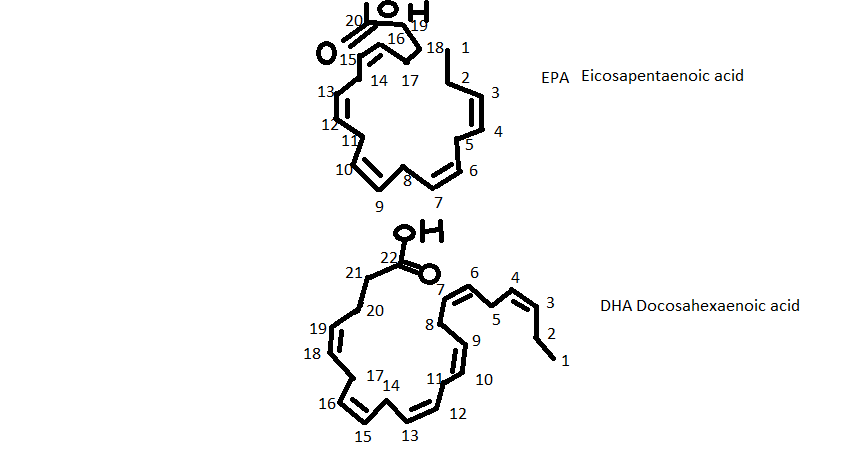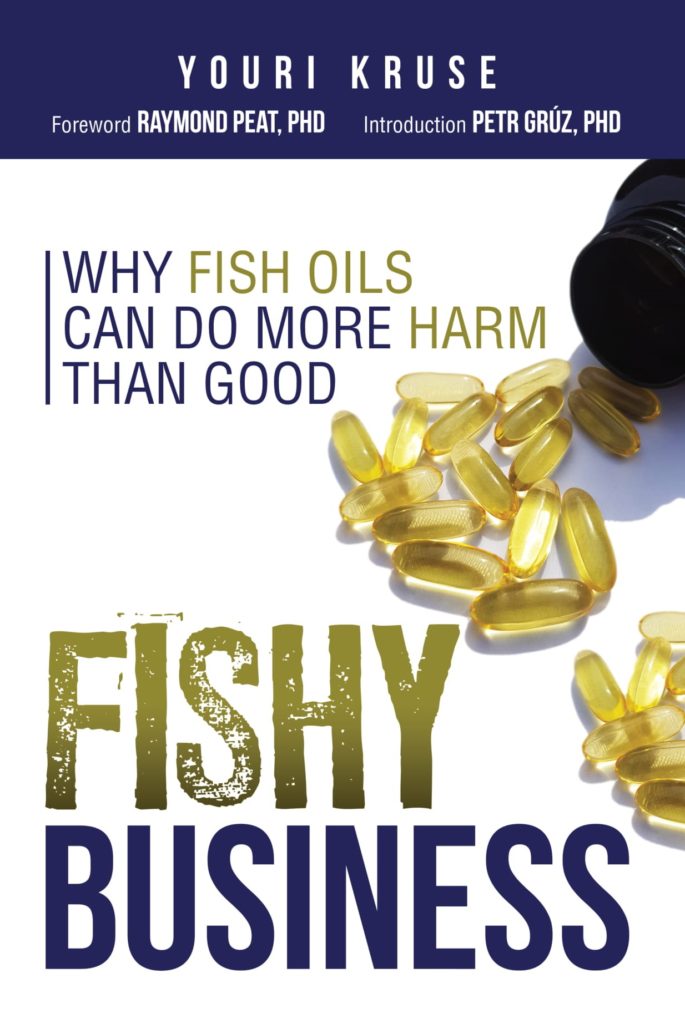Fish oils are the most fragile eatable fats in the world. The multitude of double bonds makes the fatty chain of an omega 3 very prone to oxidize and break off in many dangerous parts. These different parts can be electrophilic, meaning that they steal electrons from other molecules. Every extra double bond makes the fat more unsaturated. Every addition of double bonds also makes the fat more prone to break apart. There are more double bonds in fish oils (EPA & DHA), than any other eatable fat.

Barry Halliwell, one of the most cited researchers in the world studying fish oil supplements typically found amounts of 20-30% of lipid peroxides in fish oil supplements. These lipid peroxides can be taken up just like non-oxidized fats and incorporated into the different lipoproteins. These lipoproteins with oxidized fats can contribute to heart disease and many other pathologies. Furthermore, the breakdown products of fish oils are found in many pathologies. Current studies show that many of the fish oils sold often have up to 50% of rancidity levels, depending on the test used.
“The AIN-recommended level of antioxidant addition (butylated hydroxytoluene, 0.02 g/100 g oil) and even the addition of 100 times this level (2 g/100 g oil), although decreasing the level of oxidation products, failed to totally prevent oxidative deterioration in diets high in fish oil. Furthermore, other antioxidants added in excess to the fish oil diets also failed to completely suppress oxidative deterioration of the diets and, in addition, when fed daily to mice for a period of 4 wk, caused an accumulation of lipid peroxidation products in certain organs (e.g., heart, skeletal muscle, mammary glands) and in the carcass”[1]
“Almost all fish oil supplements available in the New Zealand market contain concentrations of EPA and DHA considerably lower than claimed by labels. Importantly, the majority of supplements tested exceeded the recommended indices of oxidative markers. Surprisingly, best-before date, cost, country of origin, and exclusivity were all poor markers of supplement quality”[2]
“Common chemical measures of oxidation have little correlation with sensory properties, making it difficult to determine the sensory quality of fish oil without the use of an expensive sensory panel”[3]
“Of the n-3 PUFA nutritional supplements tested, 50 % of them failed at least one of the voluntary safety standards recommended for primary and secondary oxidation and TOTOX”[4]
[1] J Nutr. 1992 Nov;122(11):2190-5. Lipid peroxidation products are elevated in fish oil diets even in the presence of added antioxidants. Gonzalez MJ1, Gray JI, Schemmel RA, Dugan L Jr, Welsch CW.
[2] Fish oil supplements in New Zealand are highly oxidised and do not meet label content of n-3 PUFA. Benjamin B. Albert, José G. B. Derraik, David Cameron-Smith, Paul L. Hofman, Sergey Tumanov, Silas G. Villas-Boas, Manohar L. Garg & Wayne S. Cutfield. Scientific Reports 5, Article number: 7928 (2015)
[3] CHEMICAL MEASURES OF FISH OIL QUALITY: OXIDATION PRODUCTS AND SENSORY CORRELATION, by Jenna Sullivan Ritter Submitted in partial fulfilment of the requirements for the degree of Doctor of Philosophy at Dalhousie University Halifax, Nova Scotia June 2012
[4] Jackowski SA, Alvi AZ, Mirajkar A, et al. Oxidation levels of North American over-the-counter n-3 (omega-3) supplements and the influence of supplement formulation and delivery form on evaluating oxidative safety. Journal of Nutritional Science. 2015;4:e30. doi:10.1017/jns.2015.21.
For more information about fish oils, buy the book here
